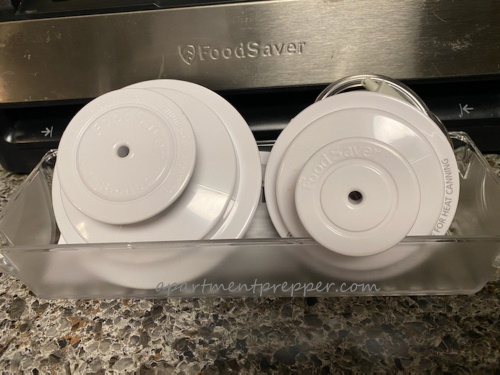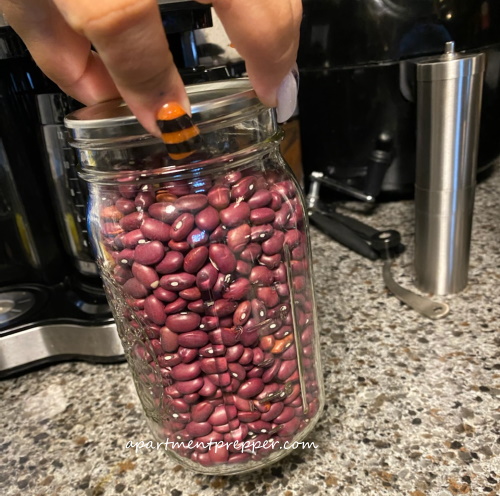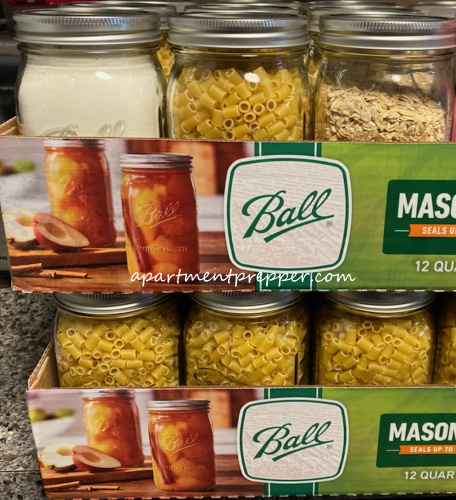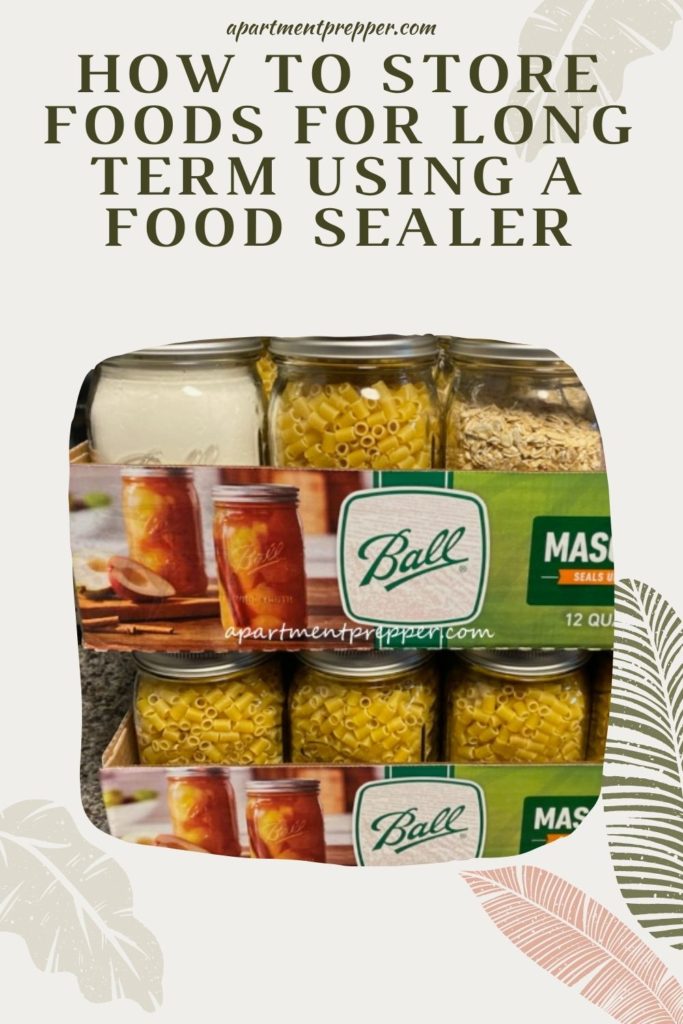Written by Bernie Carr
During these times of high inflation, it makes sense to stock up on basic foods and build a stockpile. We are seeing a lot of food shortages: a large food storage company has announced they are ceasing operations for 90 days.
I started storing bulk foods for long term storage 10 years ago, and when I open the stored foods, they are still as good as the day I packed them. Back then, I used oxygen absorbers and Mylar bags. Food sealers were quite expensive. I have noticed there are more food sealers in the market, and they have gone down in price. So if you have a food sealer with a Mason jar attachment, you can easily store a variety of foods.
When storing food for long term, we try to minimize the effects of the enemies of food storage: heat, light, oxygen, moisture, pests.
What you’ll need:
Food sealer with a Mason jar attachment (Mason jar attachment is usually sold separately)
100 cc absorbers


Vacuum sealing in a canning jar
You can store a variety of staples such as dried pasta, beans, rice salt, sugar, flour, dehydrated potatoes, pancake mix, and even other foods such as nuts, seeds, cereal, chocolate, candy potato chips and other snacks in canning jars.
Simply sealing bulk foods in Mason jars will extend their shelf life, but adding an oxygen absorber will extend it even more. Note: Do not use oxygen absorbers with foods that have moisture such as nuts, jerky, granola, brown rice, chocolate, and seeds as you run the risk of botulism poisoning. Botulism bacteria can grow in moist, low-oxygen environments. Oxygen absorbers are best used for foods that have 10% or less moisture content such as white rice, beans, oats, and pasta.
- Measure your dried staple such as dried beans into the jar.
- Add an oxygen absorber if you are using one. You will need one 100cc oxygen absorber for a quart jar.
- Place the disc-shaped Mason jar lid (not the sealing ring) on top of your jar.
- Connect the hose to the jar accessory port of your food sealer and snap it in place.
- Choose the correct size sealer for your jar (wide mouth). Place the jar sealer over the jar.
- Set it on vacuum seal by hitting the VAC SEAL button on your food sealer. The length of time the sealing occurs depends on the jar size and density of the contents. The jar is now airtight as you can see from the photo.
- Place the sealing ring and tighten. Add a label at the bottom of the jar showing the date you packed the Mason jar.


Vacuum sealing in plastic
You can also store for long term in the plastic vacuum seal rolls the normal way.
- Create the bag as instructed by sealing the bottom part of the bag.
- Use a measuring cup to fill the bag with your food staple such as rice.
- When I store flour, I add a bay leaf to protect against weevils.
- Add the appropriate number of oxygen absorbers if you are using (100 cc’s per quart) them
- Seal the bag.
- Add a label that shows the date you packed each one.
Store your sealed foods 5-gallon buckets in a cool, dark place, away from heat sources and fumes.
Of course if you don’t have a Food Saver, you can still store food for long term by using the Mylar bag method. But if you do have one, start storing food now.


If you found this article interesting or helpful, please consider helping us out (without costing you anything)! We are an affiliate of Amazon.com, which means we received a small commission if you click through one of our Amazon links when you shop, at totally no cost to you. This helps keep the lights on at the blog. Thanks!
Bernie Carr is the founder of Apartment Prepper. She has written several books including the best-selling Prepper’s Pocket Guide, Jake and Miller’s Big Adventure, The Penny-Pinching Prepper and How to Prepare for Most Emergencies on a $50 a Month Budget. Bernie’s latest e-book, FRUGAL DIY has just been released on Amazon. Her work appears in sites such as the Allstate Blog and Clark.com, as well as print magazines such as Backwoods Survival Guide and Prepper Survival Guide. She has been featured in national publications such as Fox Business and Popular Mechanics. Learn more about Bernie here.
Photos by M. Clarke




Is it possible to re-use the lid when using the food sealing method?
Hi Survivormann99, Regular canning lids are not reusable for canning, they may not seal properly after the first use. I just reuse them for refrigerated stuff not for canning. However, you can buy reusable canning lids, here’s an example: https://www.amazon.com/Authentic-Tattler-Seal-Reusable-Canning/dp/B01BYPHWK0/ref=sr_1_9?crid=UKW94DEMUKD&keywords=reusable+canning+lids&qid=1636417405&sprefix=reusable+canning+lids%2Caps%2C145&sr=8-9. Thanks for the comment.